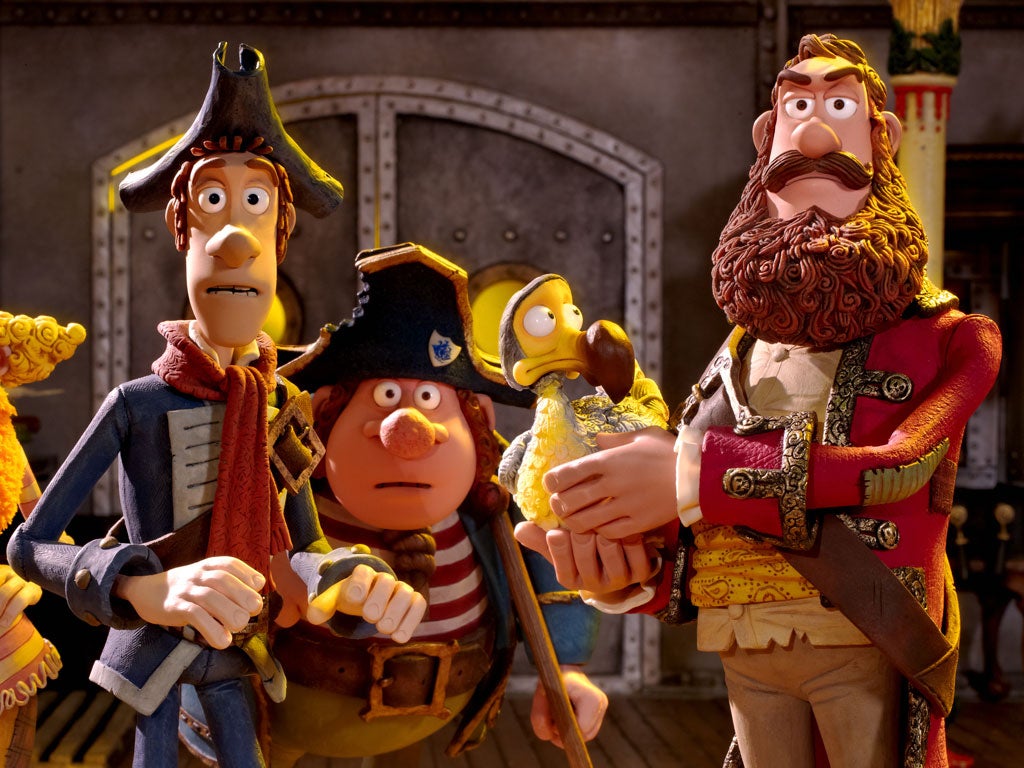Ahoy! Meet the real-life pirate scientist 300 years ahead of Aardman
Steve Connor discovers uncanny parallels between a swashbuckling pioneer and a new animated hero

Your support helps us to tell the story
From reproductive rights to climate change to Big Tech, The Independent is on the ground when the story is developing. Whether it's investigating the financials of Elon Musk's pro-Trump PAC or producing our latest documentary, 'The A Word', which shines a light on the American women fighting for reproductive rights, we know how important it is to parse out the facts from the messaging.
At such a critical moment in US history, we need reporters on the ground. Your donation allows us to keep sending journalists to speak to both sides of the story.
The Independent is trusted by Americans across the entire political spectrum. And unlike many other quality news outlets, we choose not to lock Americans out of our reporting and analysis with paywalls. We believe quality journalism should be available to everyone, paid for by those who can afford it.
Your support makes all the difference.He was a swashbuckling buccaneer who was the first person to circumnavigate the globe three times during his life as a pirate. He landed on Australia nearly 100 years before it was "discovered" by Captain James Cook and was the first Englishman to describe avocados, bananas, cashew nuts and chopsticks – among many other exotic sightings.
Click HERE to view 'Captain Dampier's extracts: The voyages of discovery' graphic
Although William Dampier, born in 1651, turned out to be a pretty hopeless pirate he was a brilliant observer and natural historian, and his exploits as an amateur scientist have led some to draw parallels with the fictional pirate captain in the latest film by Aardman Animations, of Wallace and Gromit fame.
Aardman's The Pirates! In an Adventure with Scientists, which opened at cinemas this week, tells the story of a blundering pirate who accidentally kidnaps Charles Darwin. Darwin, meanwhile, recognises that the captain's "parrot" is in fact an extinct dodo and persuades him to come to the "Scientist of the Year" competition at the Royal Society in London.
The film's makers came closer than they might have realised to describing a true story. It turns out that there was indeed a pirate scientist, and although he lived nearly 200 years before Darwin he nevertheless had a strong connection with the man whose name in inextricably linked with the theory of evolution.
Darwin's own voyages in the 1830s closely followed those of Dampier at the end of the 17th century. They both travelled to South America, rounded Cape Horn and visited the Galapagos islands before going on to Australia.
Perhaps the strongest parallel between film and real life stems from Dampier's informal connections with distinguished fellows of the Royal Society, such as the diarist Samuel Pepys and the botanist Hans Sloane, who marvelled at his detailed descriptions of far-off places.
Keith Moore, the head librarian at the Royal Society, said: "We know that Darwin had access to Dampier's book. We know that Dampier visited the Galapagos islands, and described them in just the same way as Darwin, and it's the same voyage around the world."
Dampier became a meticulous note taker, describing for instance how to make the avocado more palatable by adding sugar and lime juice – probably the first recipe in English for sweet guacamole.
In addition to describing the mango and the Chinese habit of drinking dishes of tea, Dampier wrote about the giant tortoise or "land turtle" of the Galapagos, saying there were enough on the islands to feed up to 600 men for several months.
Despite many raids on Spanish galleons aboard privateer vessels, Dampier did not seem to have had much success as a pirate, dying in penury in London in 1715 with debts of £677.
Join our commenting forum
Join thought-provoking conversations, follow other Independent readers and see their replies
Comments